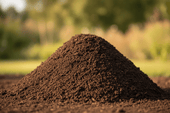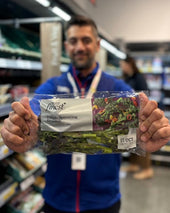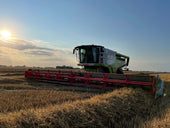At Wildmore Compost, we believe that great gardens begin with great soil, and that nothing in nature should go to waste. Peat-free compost is one of the most powerful tools in a gardener’s kit: rich, sustainable, and kind to the earth. But what happens once it’s been used? Can you give it a second life?
The short answer: absolutely. With a little care, spent peat-free compost can be revived, refreshed, and ready to nourish your next season of growth. Here’s how.
What Happens to Compost After It’s Been Used
Once your compost has supported a round of plants, whether in pots, beds, or containers, it becomes what’s known as spent compost. Though it may look tired, it still holds life within it. Traces of nutrients like nitrogen, phosphorus, and potassium often remain, along with beneficial microbes and organic matter that help build healthy soil structure.
So rather than sending it to waste, it’s worth breathing new life back into it. To save money, and to save the planet.
Why Reusing Compost Matters
Recycling your peat-free compost isn’t just good for your garden, it’s good for the planet.
Every handful you reuse means less waste sent to landfill and fewer emissions released into the atmosphere. It’s a small act of regeneration that ripples outward. A simple, beautiful way to garden in harmony with nature.
And beyond its environmental benefits, refreshed compost also helps your plants thrive. It improves aeration, retains moisture, and supports the living network of microorganisms that make your soil sing. Plus, it saves you money, which means more to spend on seeds, pots, or perhaps that new plant you’ve been eyeing up.
How to Refresh Spent Peat-Free Compost
Bringing compost back to life is easier than you might think. Here’s our go-to Wildmore Compost method:
- Tip It Out: Grab a sheet or board to tip the compost onto. This allows you to see all of the compost and remove anything that shouldn't be there. It also opens the compost up if it was compacted.
- Break It Up: Start by loosening the compost with your hands or a fork. Break down any clumps to restore airflow.
- Add New Life: Mix in fresh, organic materials such as leaf mould, well-rotted manure, or worm castings. These boost nutrient levels and microbial activity. Mix in around 30% new organic matter with 70% spent compost.
- Top It Up: Blend in a portion of new peat-free compost or home-made compost to enrich the mix.
- Keep It Moist: A damp (but not soggy) texture helps microbes thrive. If it feels too dry, lightly water it.
- Turn and Tend: Stir it every few weeks to keep it aerated and healthy.
You’ll know it’s ready when it feels crumbly, smells earthy, and looks rich and dark again. A sign that life has returned.
Tips for Using Recycled Compost
Refreshed compost can be used in a variety of ways across your garden:
- Mix it with fresh compost for potting up new plants.
- Use it as a top dressing for established beds and containers.
- Add it to raised beds or vegetable plots to improve structure and moisture retention.
- Add extra fertiliser for hungry plants such as roses.
- If the compost is very old, it can be used as a mulch around established trees & shrubs.
It’s perfect for fast-growing crops like herbs, leafy greens, and annual flowers that thrive on a steady but gentle nutrient supply.
A Few Things to Avoid
Even the best compost can lose its magic if mistreated. Avoid overwatering. Compost needs oxygen as much as moisture. Keep an eye on temperature too; if it’s too cold or too hot, microbial life can slow down. And if you ever notice a sour smell or mould, it’s a sign your compost needs more air and balance.
The Wildmore Way
At Wildmore Compost, we believe in compost that gives back to your garden and the ground it came from. Reusing peat-free compost is one of the simplest, most powerful ways to nurture your patch sustainably.
So next time you ask, “Can I reuse my compost?” Know that the answer is a wholehearted Yes. With a little refresh and care, your soil can live on to grow something beautiful, again and again.





















0 comments